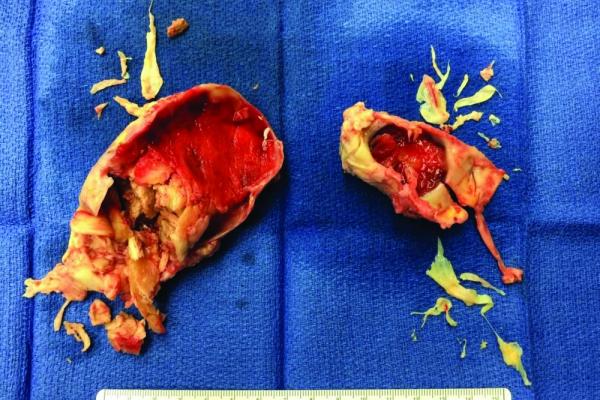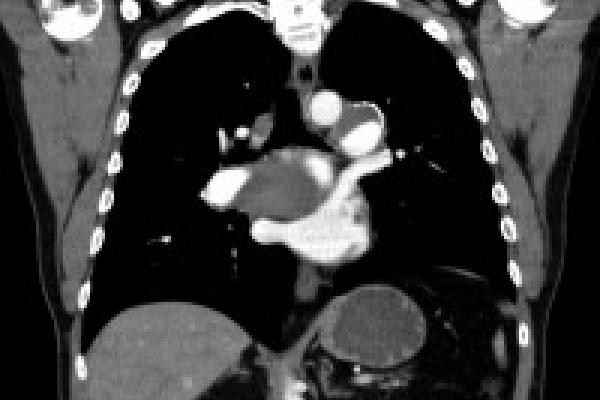Not long ago, we saw a 62-year-old male patient named Kevin who came to us complaining of shortness of breath. He’d had blood clots that had traveled from his leg to his lungs (known as a pulmonary embolism) 30 years before, and another episode in the mid-1990s. Over time, these blood clots grew and obstructed his pulmonary artery. He’d also been diagnosed with a blood clotting disorder called protein S deficiency. He reported passing out twice while either coughing or exerting himself in the past three months.
Kevin had developed pulmonary hypertension (PH), increased pressure in the pulmonary arteries. These arteries carry blood from your heart to your lungs to pick up oxygen. PH causes symptoms like shortness of breath during routine activity (for example, climbing two flights of stairs), tiredness, chest pain, and a racing heartbeat. As the condition worsens, its symptoms may limit all physical activity.1
Here’s what happened next for Kevin:
- His own pulmonologist performed some preliminary scans and suspected that Kevin may have CTEPH, or chronic thromboembolic pulmonary hypertension – a rare and often fatal form of pulmonary hypertension. It is an unusual condition that many hospitals haven’t seen or treated.
- His pulmonologist referred Kevin to the Temple Pulmonary Hypertension & Right Heart Failure Program for further testing, evaluation and treatment.
- Over a number of months, my team and I conducted extensive testing and were able to conclusively diagnose Kevin with CTEPH.
- After reviewing Kevin’s test results, I told him the size of his clots meant that he was going to need complex surgery called PTE (pulmonary thromboendarterectomy), which is performed at only a few hospitals in the US.
- Our staff was able to put the patient at ease with our history of successful outcomes and 97% success rate.
- Kevin underwent successful PTE surgery with extensive chronic clots removed from both lungs on a Monday and was discharged on a Saturday.
- His pulmonary hypertension resolved and, with the obstructions removed from his pulmonary artery, the right side of his heart, which had become enlarged, returned to normal size.
Kevin is feeling great these days.
Reference:
- https://www.nhlbi.nih.gov/health/health-topics/topics/pah. Accessed September 10, 2016.



